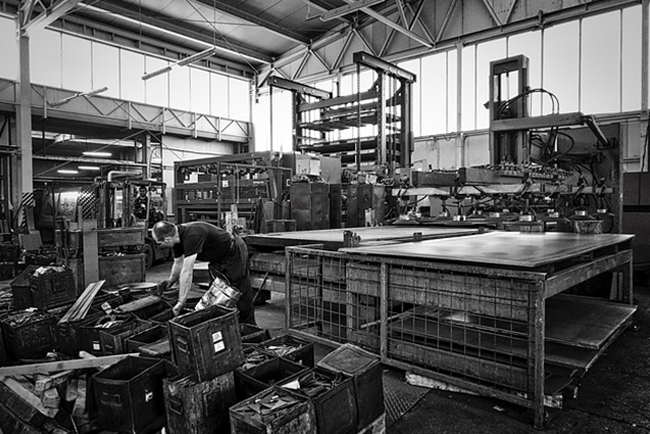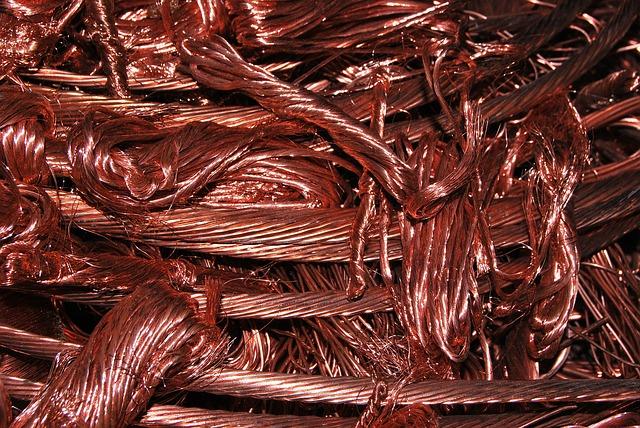We live in a metal-dependent world. While our ancestors could have done well with just wood and stone, it is after they discovered metals that the human race was able to ascend to the top of the food chain. Metals have since become the backbone of industrialization. And it’s going to take a while before we find equally efficient alternatives to metals.
If you make a list of typical household items that are made of metal or have metallic parts, you are in for a big surprise. In your kitchen alone, you’ll find dozens of them: fridge, stove, sink, faucet, cookware, and even the nails and hinges that keep your cabinets from falling apart – they are all made of metals. You will also notice that many of them have flat and thin structures, including the casing of your stove or fridge, your sink, and many of you cookware.
Are you curious to know how these sheet metals end up being components of those household items? Would you like to take a peek at the manufacturing process? If you’ve ever been to a copper sheet supplier before, you probably have an idea of how these items first looked like before fabrication.
What is sheet metal fabrication?
Before catching a glimpse of the sheet metal fabrication process, let’s first take a further step back to know where the raw materials used in this process come from. Knowing the origin of these materials helps us get a sense of the immensity of work involved in manufacturing familiar metallic products.
All metals turned into industrial supplies start out as ores. Every day, thousands of tons of ores are being extracted in mines around the world. These ores are transported to smelting facilities where they are processed to separate the metals from the dregs. The collected metals then sent to foundries where they are melted and cast into blocks or plates of different shapes and sizes. Some foundries produce finished products, while others produce raw materials that need further work. And that’s where sheet metal fabrication comes in.
Sheet metal fabrication is a subset of metal fabrication that focuses on sheet metal. It’s the multifaceted process of creating metal structures out of sheet metals. It starts with flattening raw metals to a specific thickness and breadth through rolling, pressing, or hammering. Once the metal sheet or plate is ready, it goes through any of the following methods, depending on the desired output.
-
Cutting
Possibly the most common of all processes involved in sheet metal fabrication, cutting produces metal pieces of precise dimensions, divide large sheets into several parts, and create accurate perforations. You can cut sheet metals manually using power tools or with laser cutters.
-
Blanking
This cutting method involves cutting out a portion of the sheet metal based on a stencil. The excess material is discarded or recycled.
-
Bending
Depending on the design, you may need to ben portions of the sheet metal cuts you’ve made. You can do this using press brakes and other tools. Large sheet metal suppliers like Rotax Metals use heavy-duty, cutting-edge equipment for bending metals parts.
-
Galvanizing
To increase sheet metals’ corrosion resistance, their surfaces are coated with zinc. A good example of galvanized sheet metal is corrugated metal roofing panels. The zinc coating works effectively in prolonging the life of your roof.
-
Milling
If the metal piece is still too thick and further reducing its thickness through rolling or stretching is impractical, milling is the next best course of action. It requires the use of a rotary cutter.
-
Shrinking
Sometimes, the finished product has small dents on its surface that count as a defect. You can get rid of these dents by heating and stretching the metal piece a little bit until all of the dips disappear.
Types of Sheet Metal
Any metal with a considerable level of malleability can be transformed into thin sheets or plates and eventually fabricated through the previously mentioned processes. Tough and rigid metals are often combined with soft metals to produce malleable but strong alloys. Below are some of the common types of sheet metals.
-
Copper
One of the most extensively used metals, copper possesses many valuable properties. Malleability is one of them, which is why copper is often cold-worked. Copper is also known for its high corrosion resistance, electrical conductivity, recyclability, and antimicrobial property. It combines well with other metals, too.
-
Brass
An alloy of copper and zinc, brass is also extremely malleable. It’s no wonder many metallic products that consist of tubes and plates, such as musical instruments and cookware, are made of brass. This metal is famous for its gold-like appearance, but you can produce different colors of brass by changing its content proportions.
-
Bronze
Another alloy of copper alloy, bronze is made of copper and tin. Both are corrosion resistance and extremely malleable, which is why bronze is a perfect material for a lot of machine parts and vehicle body. Many ships have bodies made of unique types of bronze.
-
Stainless Steel
This metal comes in a vast array of grades. Like copper and its alloys, stainless steel is also corrosion-resistant even though it contains iron. The most common types of stainless steel are austenitic stainless steel (containing chromium and nickel), ferritic stainless steel (containing high levels of chromium but little nickel), and martensitic (does not contain nickel).
-
Aluminum
There are many reasons why aluminum is a popular choice in both manufacturing and construction. For one, it’s corrosion-resistant like the previously mentioned metals. It also has an outstanding strength to weight ratio. And perhaps the most recognizable feature of this metal is its abundance. Aluminum is one of the most abundant elements on Earth.
Knowing which metals are malleable allows you to choose the right material for your sheet metal fabrication projects. Of course, each of these metals is available in different grades. To be sure which grade will work best for your projects, consult with expert brass suppliers. Explain the nuts and bolts of your project, and they can tell you the right type and grade of metal to use.



